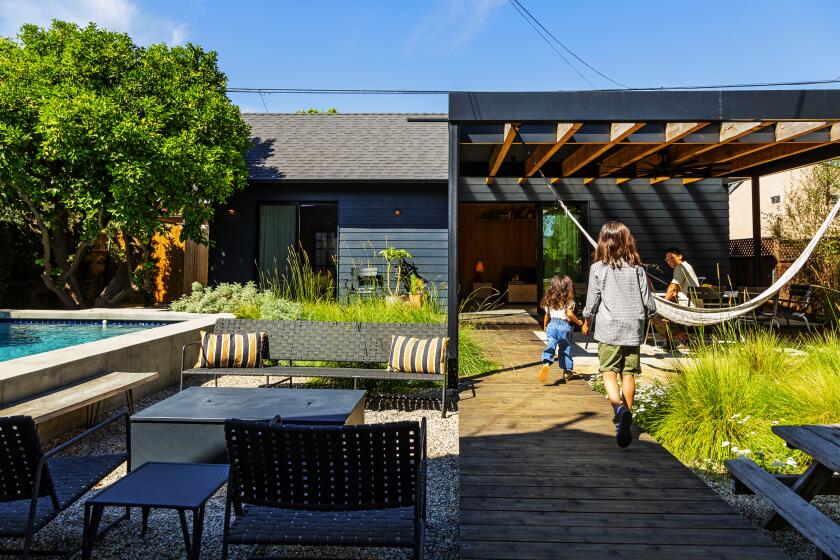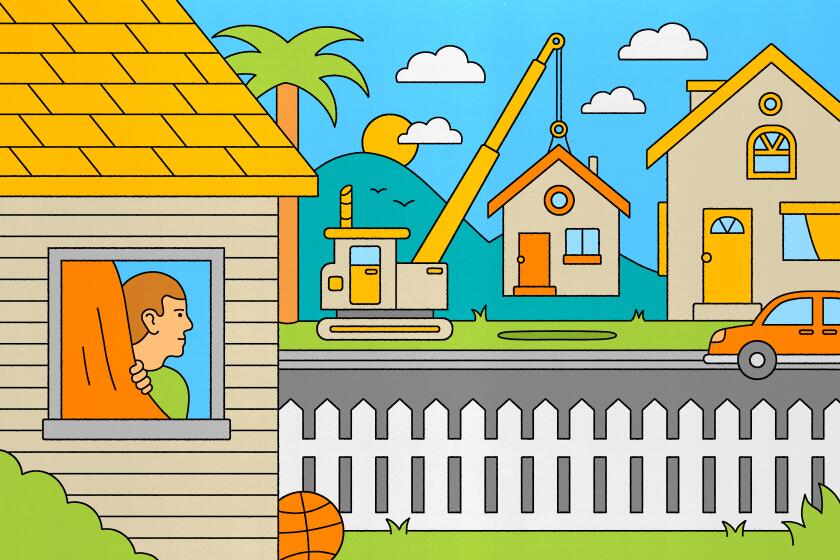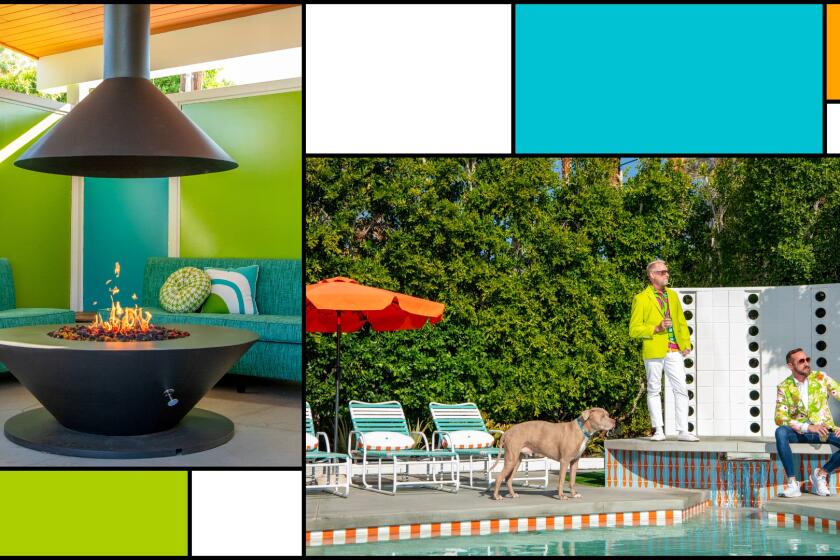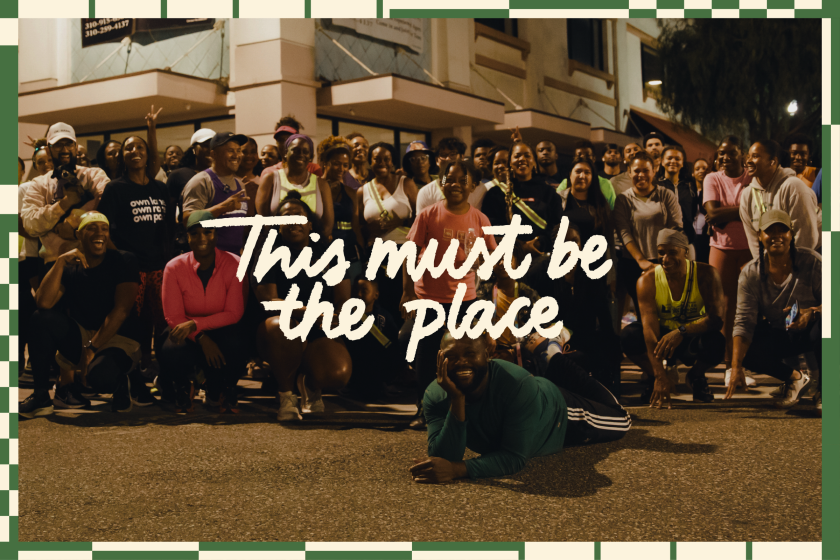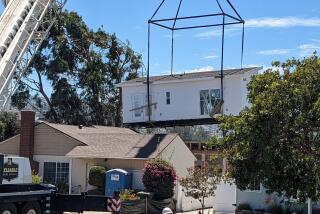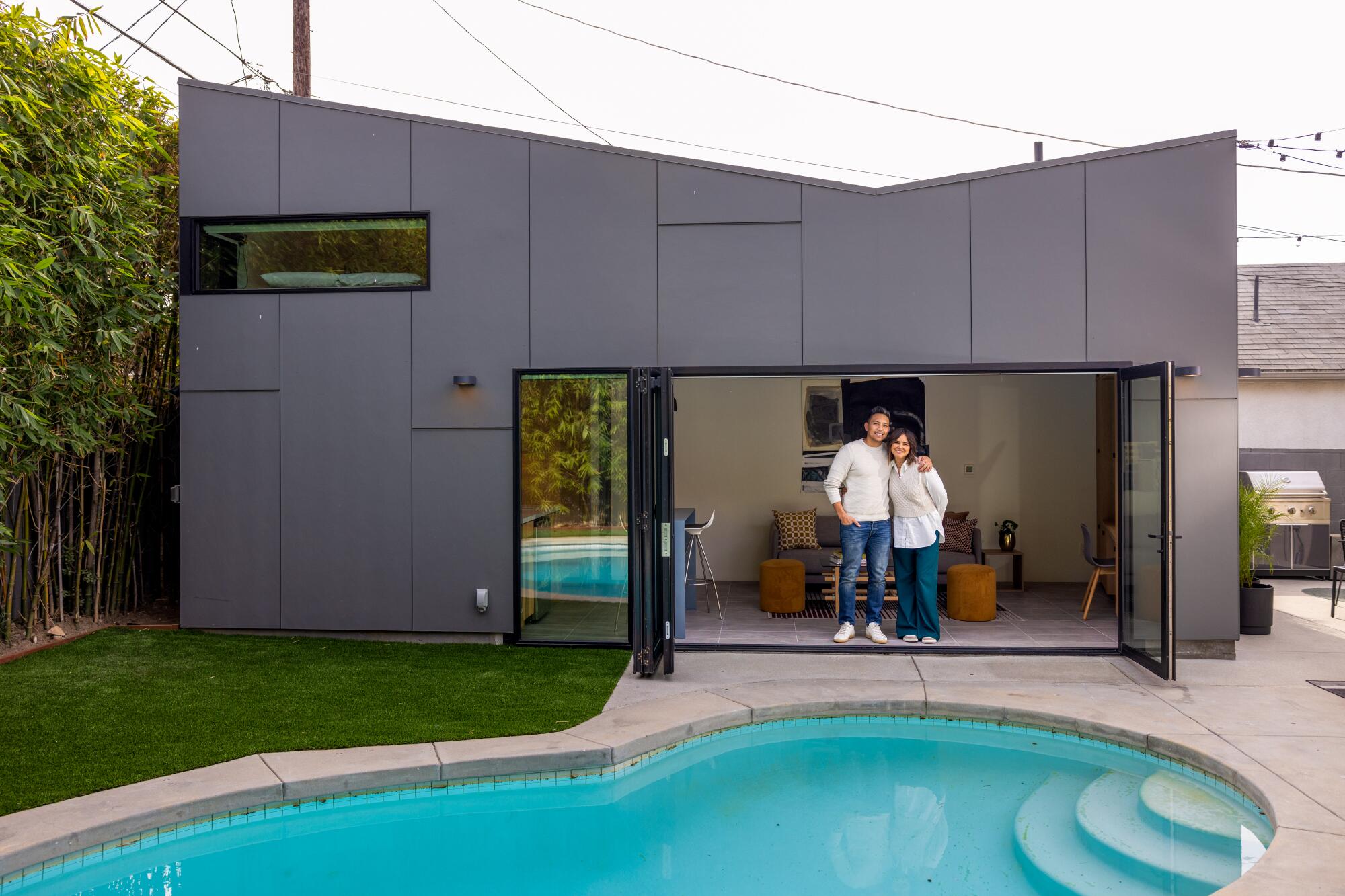
“This is the backyard of which dreams are made,” the 2017 listing read. “Relax or entertain in your covered outdoor dining area beside the swimming pool and lush bamboo, creating a tranquil privacy. California living at its finest.”
Included among the listing’s photos: A simple A-frame carport next to a kidney-shaped swimming pool.
Three years after they purchased the Los Angeles home, Leslie-Anne Huff and her husband, Reggie Panaligan, were less interested in entertaining poolside and more concerned with how to live, work and parent their daughter during the COVID-19 pandemic.
“We were knee-deep in taking care of our infant daughter and working from home,” says Panaligan, a Google executive. Meanwhile, when Huff, an actor, wasn’t taping her auditions in a closet, she stored her film equipment in their daughter’s bathtub.
They needed more space.
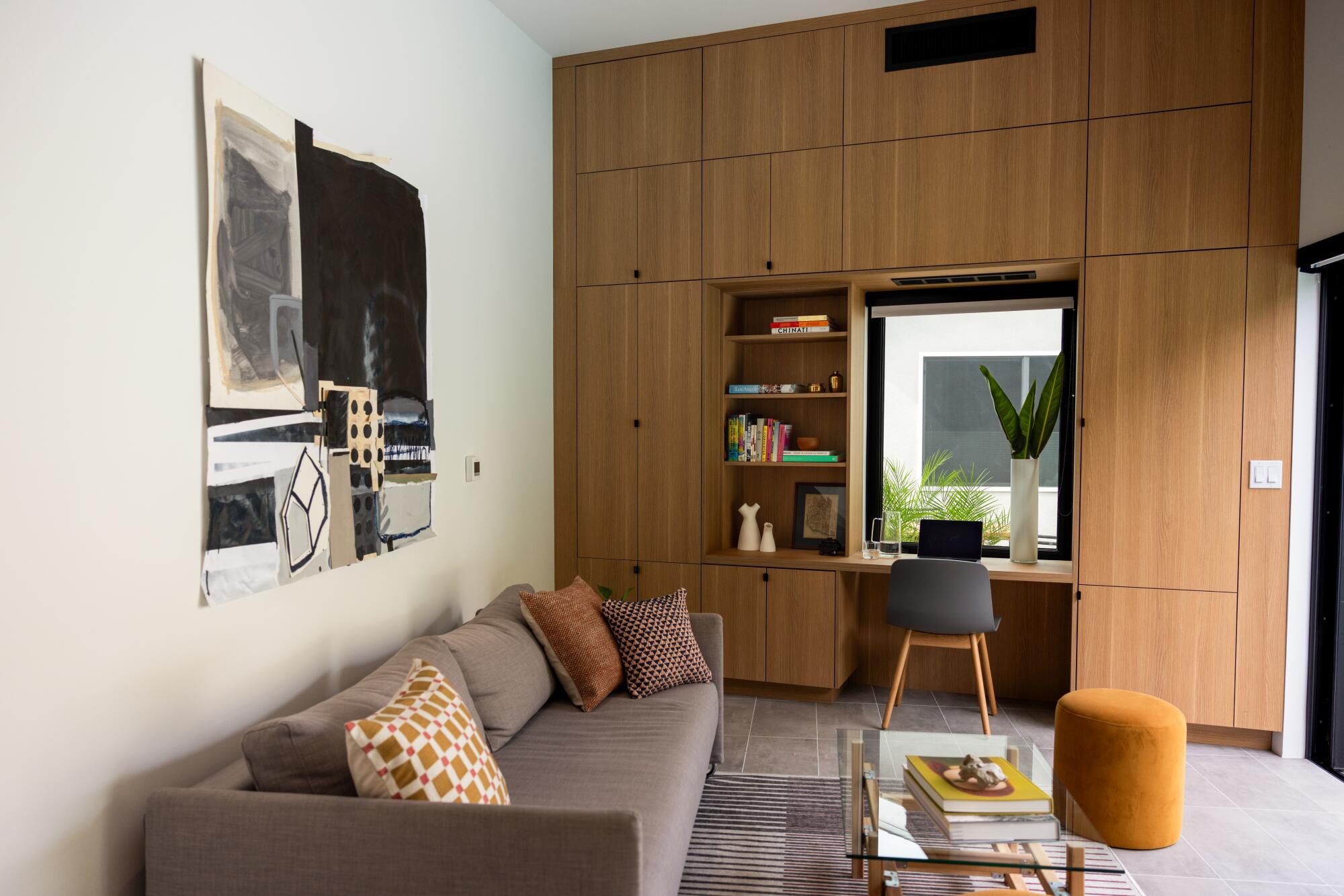
The couple, who are both 40 and met while students at UC Berkeley, considered getting rid of the pool to make room for an accessory dwelling unit, thanks to California’s ADU laws, which allow anyone to put one on their residential lot, no matter how small.
But bids to remove the pool were expensive: as high as $15,000.
Homeowners and architects share some of the lessons they learned in building an accessory dwelling unit, or ADU, on single-family lots in Los Angeles.
The couple turned their attention to the carport, hoping to transform the simple dwelling into a dynamic, multifunctional space for themselves and their extended family.
After spending so much time at home together during the pandemic closures, the pair had a strong sense of what they were looking for when they hired architect Lisa Little of Los Angeles-based firm Vertebrae to help them design an ADU.
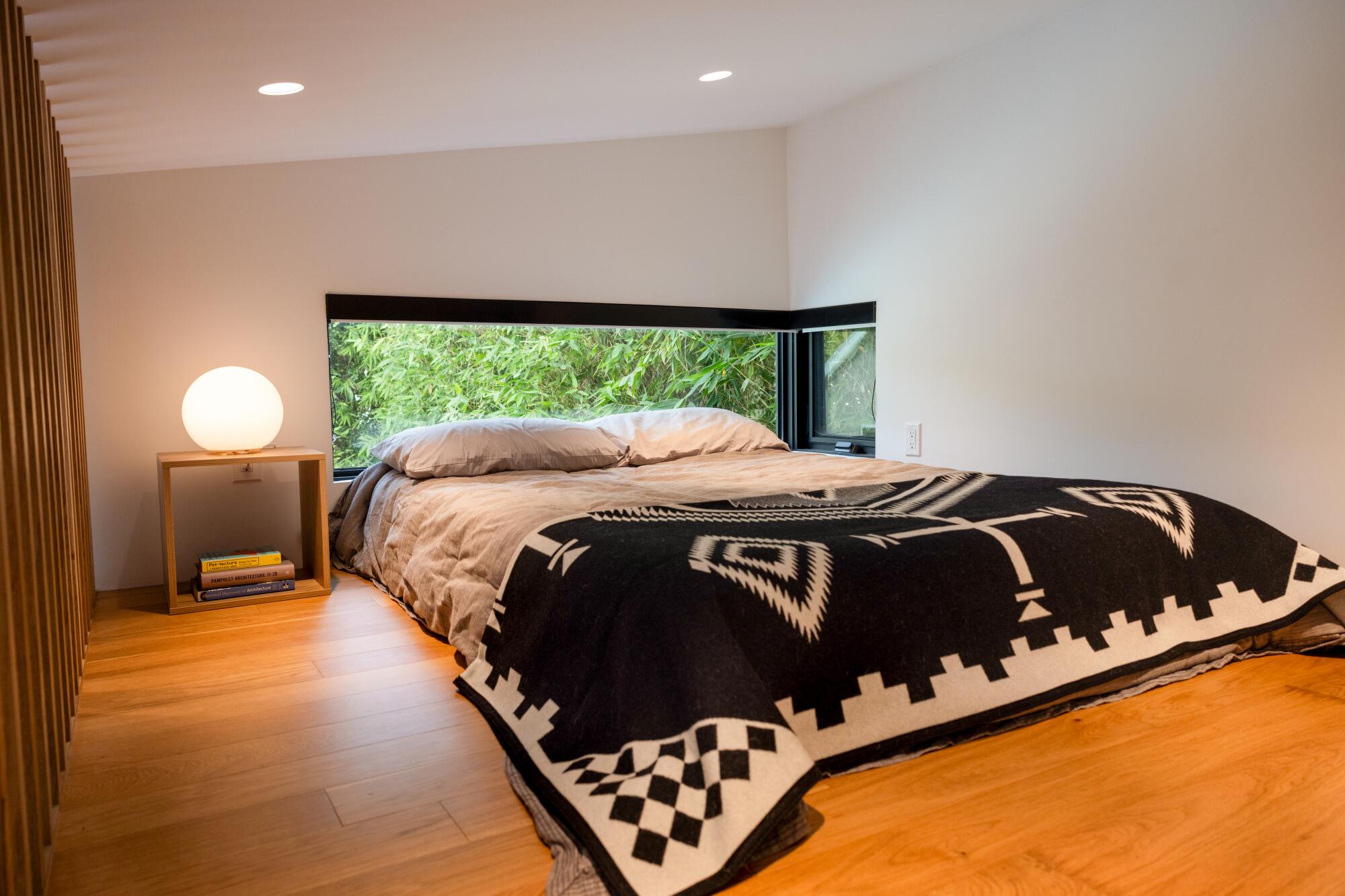
“We wanted an office, a self-tape studio, a gym, a pool house, housing for grandparents and storage,” says Huff. True to pandemic trends, the couple also discussed a Peloton closet but later dropped it.
When it comes to design, Huff describes Panaligan as the visionary in their relationship. “Reggie’s the one who knows what he wants visually, and I’m the one who knows how it’s going to operate,” Huff says with a laugh.
Although they needed more space, they also wanted to add a second dwelling that was both modern and unobtrusive.
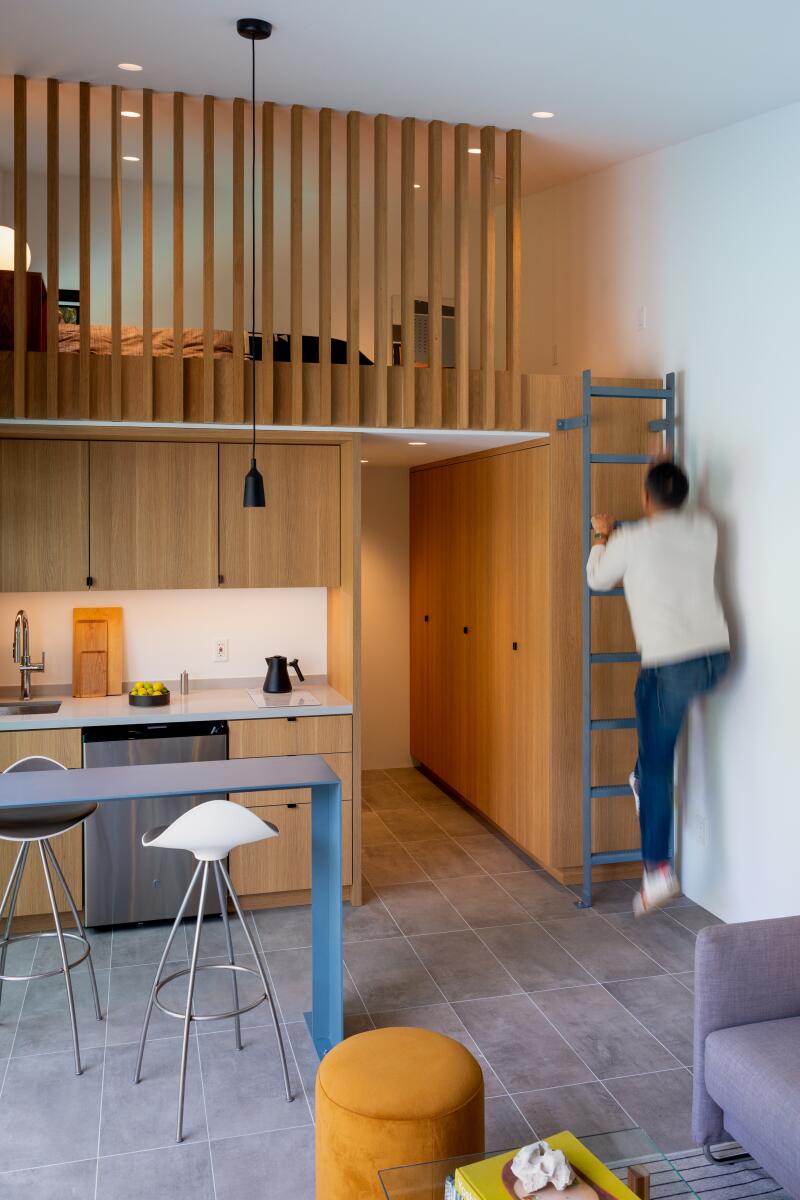
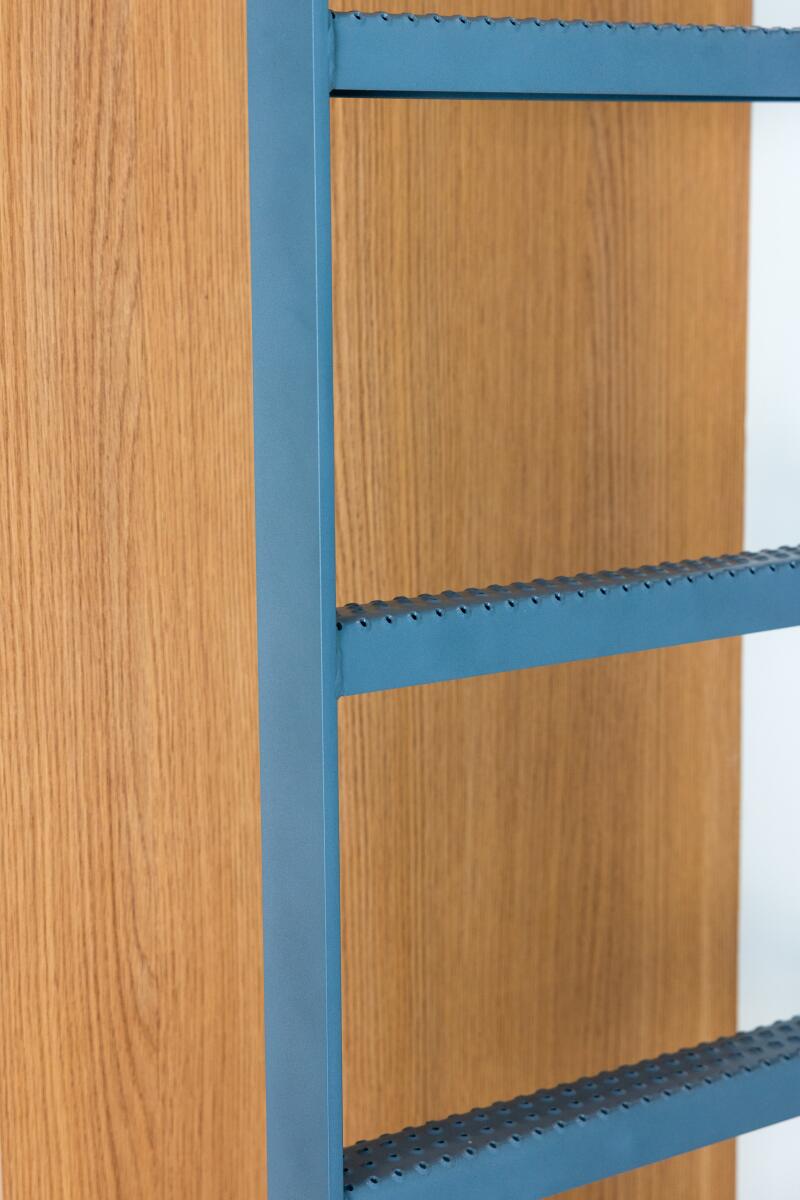
Reggie Panaligan climbs to the sleeping loft inside the ADU. (Jay L. Clendenin / Los Angeles Times)
So when it came time to add a 380-square-foot ADU for about $300,000 (the couple says they spent $250,000 on the dwelling and $50,000 on site and utility work), Panaligan envisioned a modern dwelling that wouldn’t overwhelm the tight space.
“That was part of the challenge,” Little says. “The main house was fairly plain. So my thinking was, ‘How do we create something new that is a contemporary partner with the 1923 house?’”
Little came up with what she calls a trapezoid; the ADU has an asymmetrical butterfly roof clad in gray fire-resistant fiber cement siding.
The sculpted roof lines create a simple but striking geometry that allows anyone to occupy the open floor plan effortlessly, Little says. “We didn’t want it to be matchy-matchy. One option was to clad the house in wood, but we wanted it to be streamlined with the existing home’s gray stucco.”
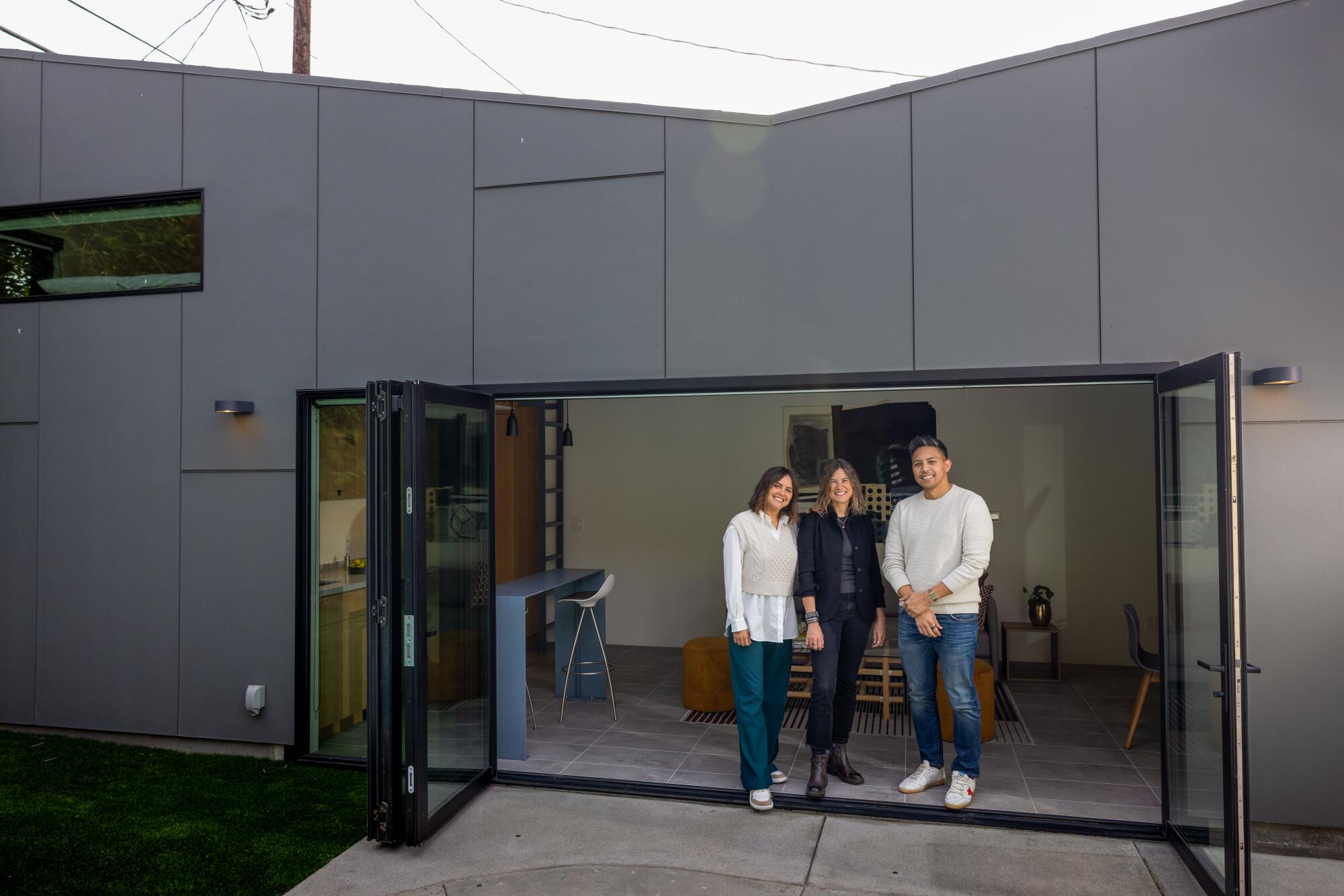
As with many garage conversions, demolition was straightforward but site preparation came with unforeseen headaches: The necessary foundation and plumbing work was much more extensive — and costly — than anyone had anticipated.
“When building an ADU from the ground up, you still have to do everything: the foundation, utilities, electrical, plumbing,” Little says. “The foundation under the carport was unnecessarily deep — there was a massive amount of concrete — and it had to be demolished to make room for the new ADU foundation.”
The first question to ask before deciding on an accessory dwelling unit is, ‘What am I trying to accomplish?’ Then check whether an ADU is the way to achieve that goal.
After talking with their neighbors, the couple believe the carport was a dwelling before previous owners remodeled the house during the 1970s. “When we registered the address, the city said the address already existed,” Panaligan says of the carport’s mysterious history. “Every once in a while, we’ll get snail mail for the ADU address.”
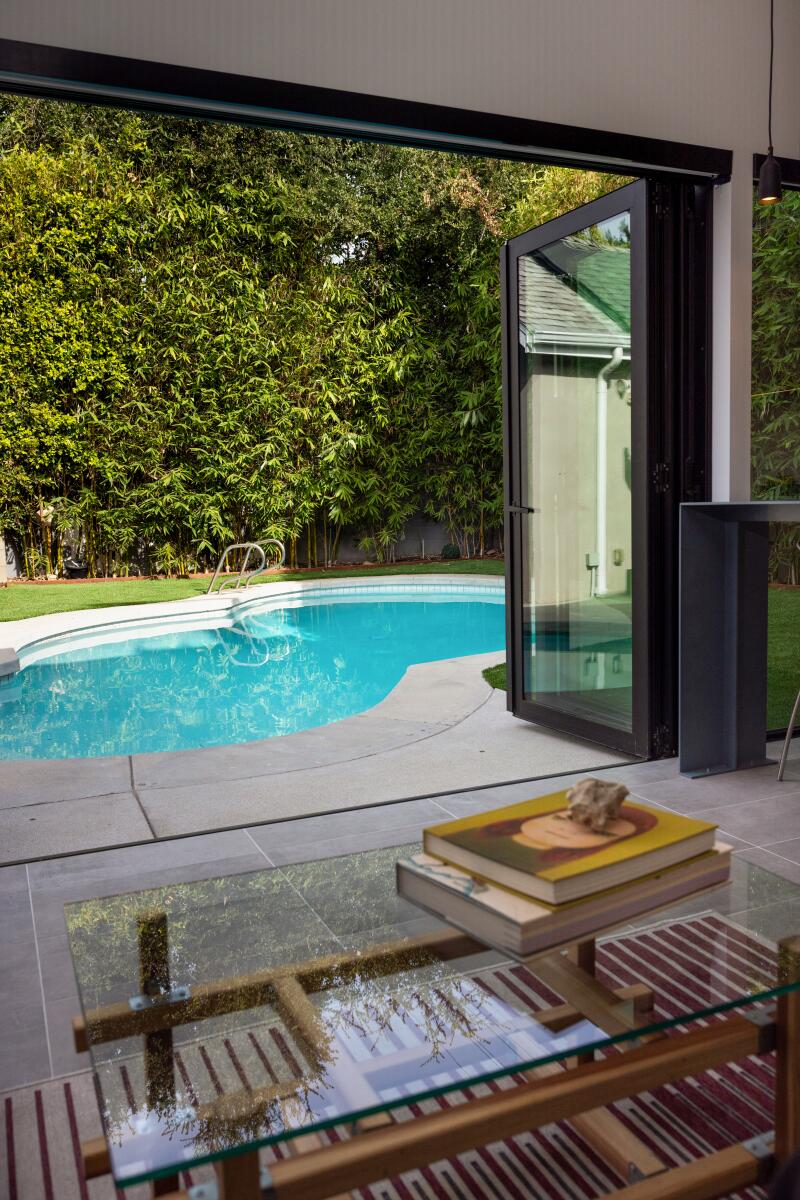
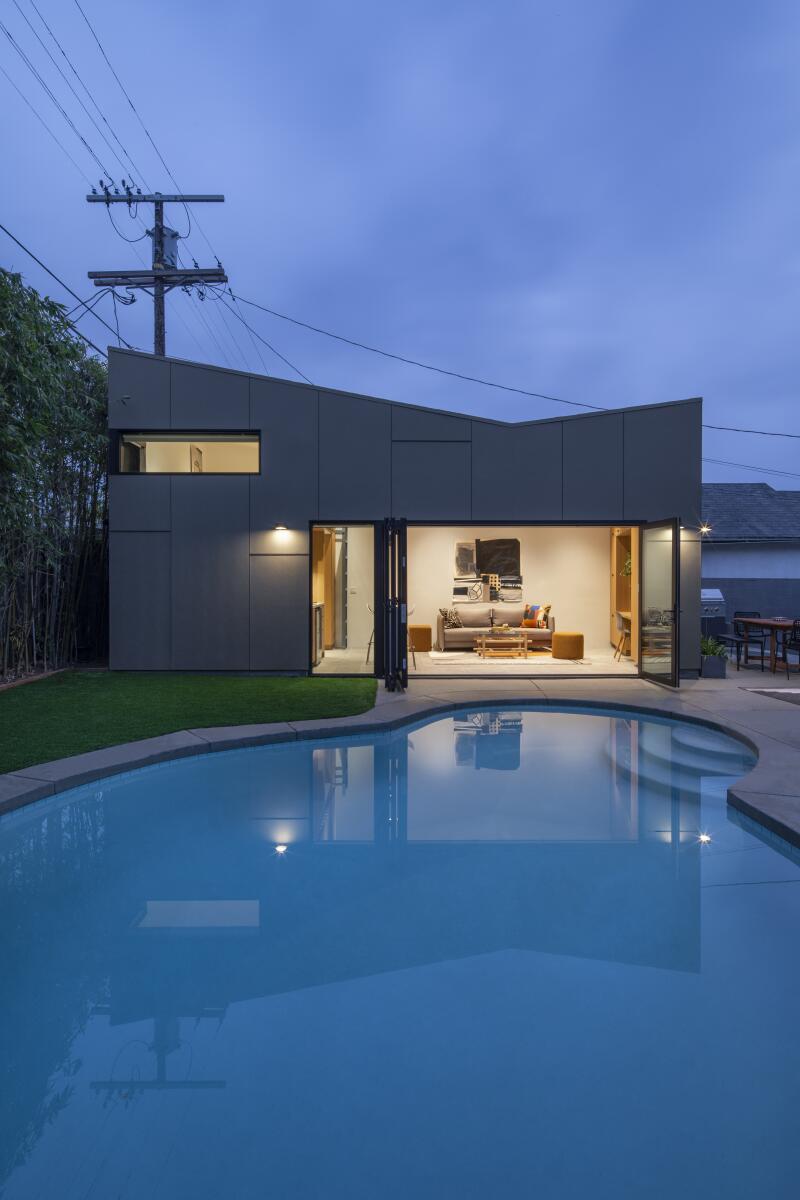
A view of the pool from inside the ADU, left (Jay L. Clendenin / Los Angeles Times), and illuminated at dusk, right. (Art Gray )
For Little, making the most of the constrained site proved to be a challenge that pushed her creatively. “Site constraints are productive,” she says, noting the swimming pool. “They push you to create something unique. Constraints also keep us from building more than we need.”
Opening onto the pool, the ADU is divided into two spaces: a public area consisting of a kitchenette with a cooktop and mini refrigerator (but no oven), a living room with a sleeper sofa and office area, and an 80-square-foot loft that is accessed by a powder-coated metal-fabricated ladder and can accommodate a queen-size bed.
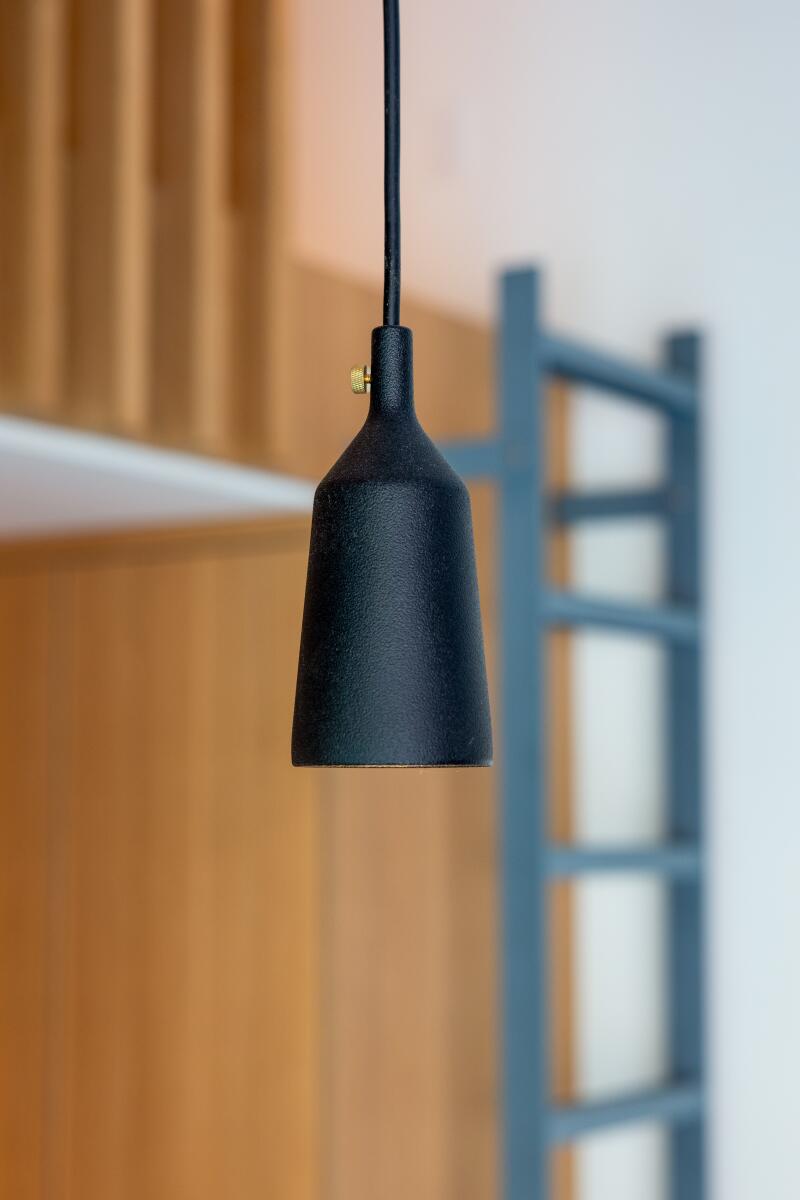
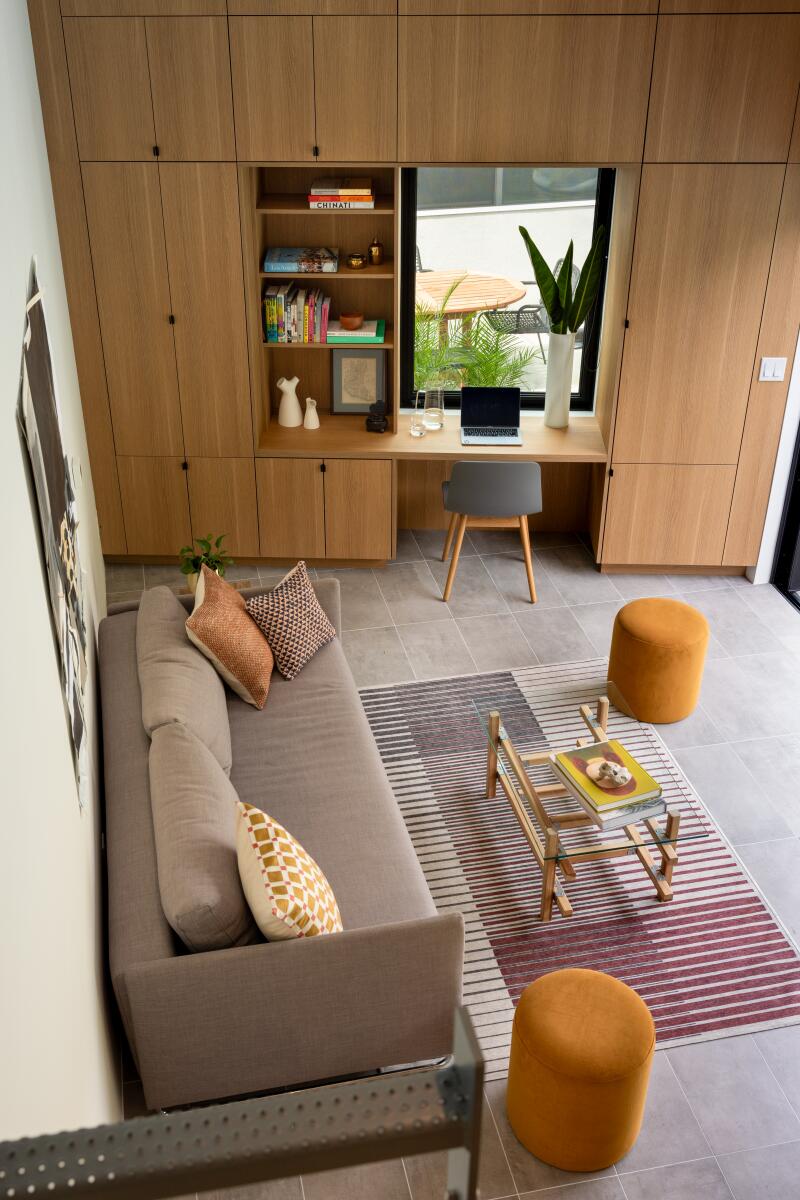
A view of the living space from the sleeping loft. (Jay L. Clendenin / Los Angeles Times)
Little designed abundant storage in the tight setting to allow potential tenants to live comfortably in a clutter-free environment.
On one wall, a built-in desk with a picture window overlooks the patio, surrounded by a wall of floor-to-ceiling custom-built cabinets in white oak. “I was trying to lessen the visual noise,” Little says of the millwork that provides soft light and conceals the mini-split HVAC system. “Reggie works in that space, and he needs the space to be calm and quiet.” Another bonus: Huff no longer needs to store her film equipment in the bathtub.
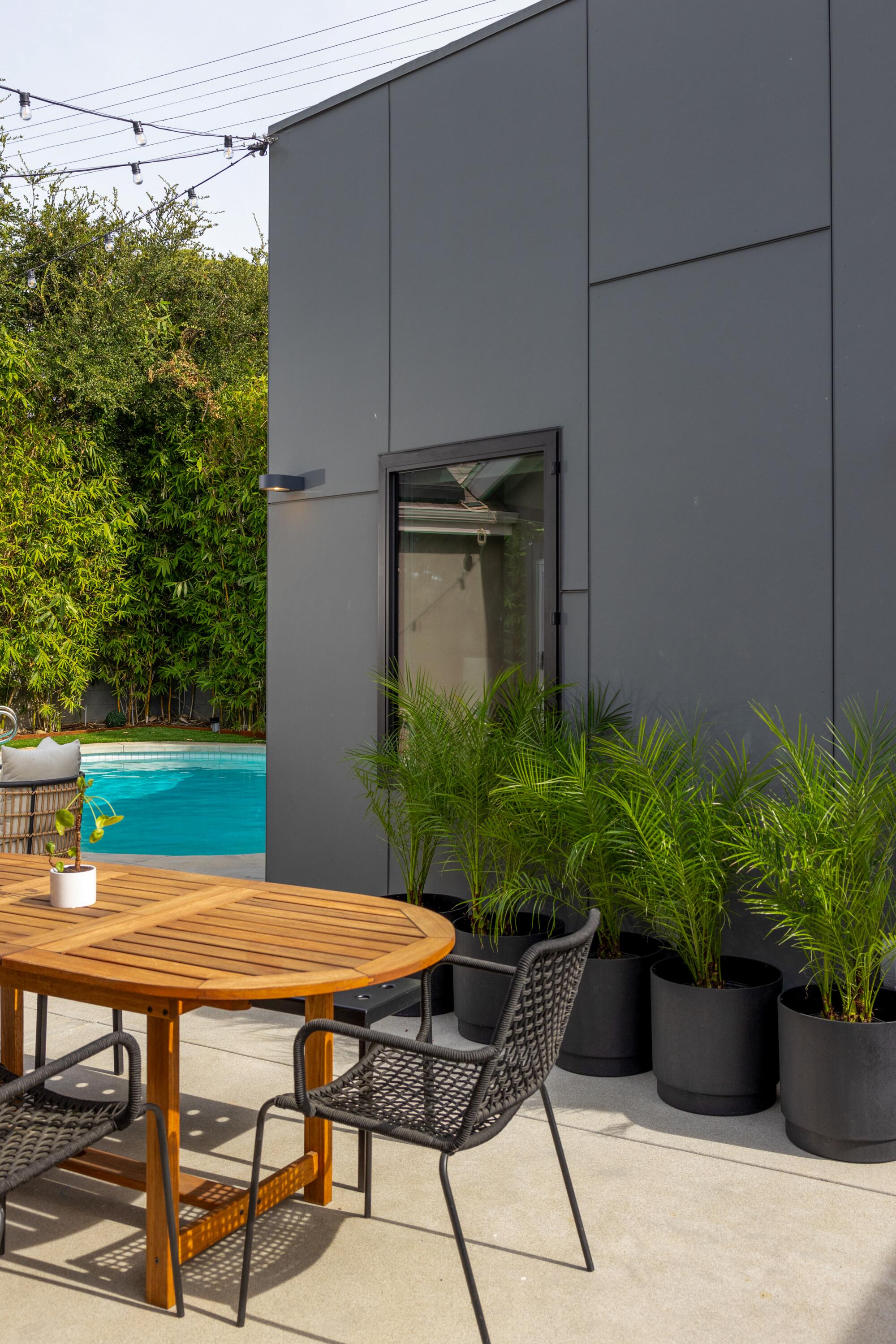
The long solid wall closest to the property line provides privacy from next-door neighbors. Doors and windows face the pool and home, or, as Little says, “the parts you want to connect with.”
No one can look into the ADU from the house or neighboring homes. The central opening, outfitted with a glass accordion door, faces the pool, not the main house.
The Shag House in Palm Springs is a joy-filled testament to midcentury optimism. It will be open to the public during Modernism Week, which runs Feb. 15-25.
Now that the ADU is complete, the couple is happy they didn’t remove the pool. There’s still patio space for them to enjoy the outdoors, a play area for their daughter on the side of the house and parking for their two cars.
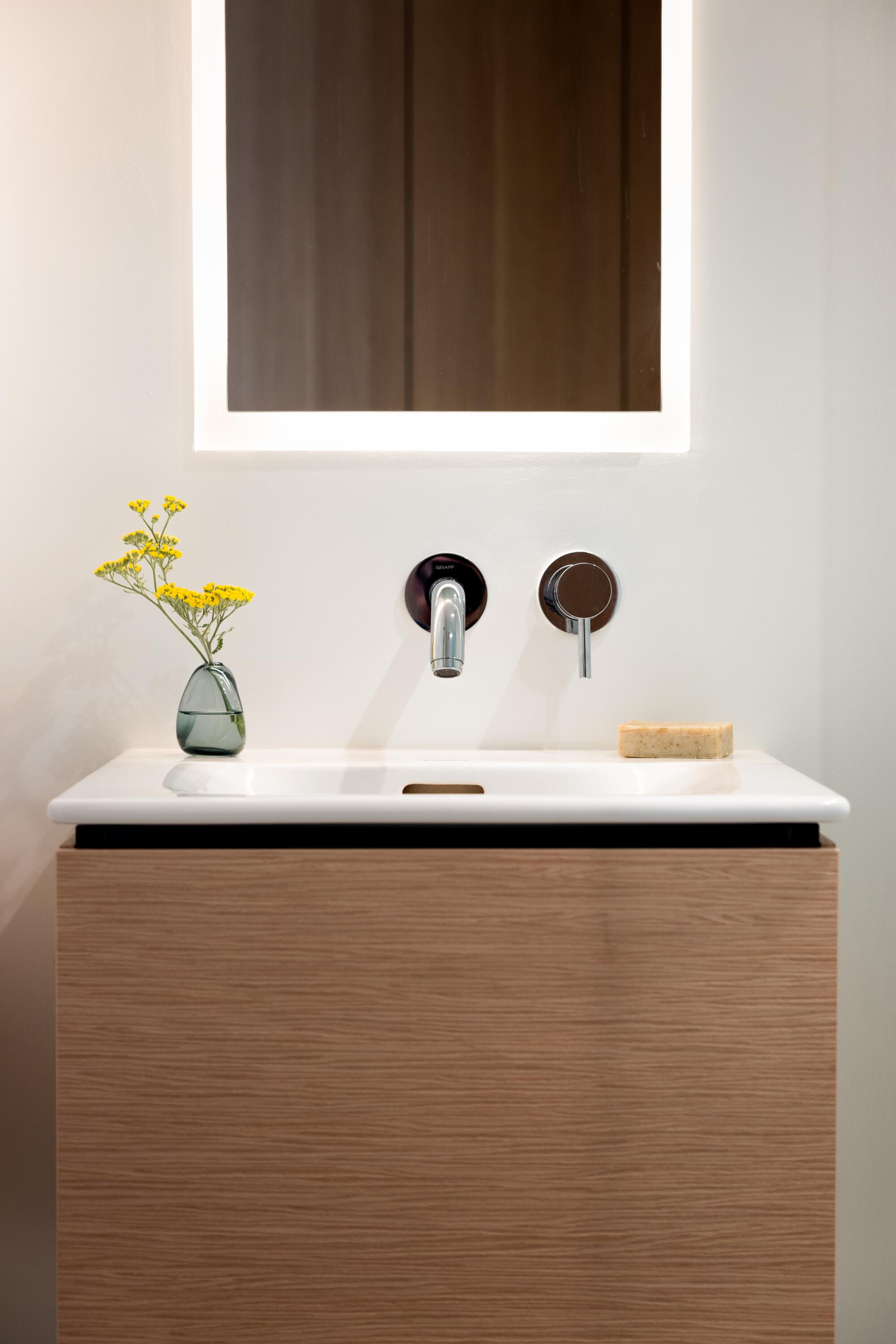
“There’s something so nice about having a pool as our daughter gets older,” Huff says. “Her friends can come here and swim. We’ve already hosted some swim lessons.” (Note: The couple temporarily took down the safety fence surrounding their pool for The Times to take photos.)
Huff adds that the lighting is sensational at night. “I was picturing what the ADU would look like at night before it was built,” she says. Now, family members can enjoy the ADU at all hours, even when they’re inside the main house.
The couple say their ADU has increased their options regarding potential rentals (“Never say never,” Huff says of renting the ADU in the future) or providing housing for aging parents or family members just starting their careers. They have already put their ADU to good use as occasional housing for a friend who lives in San Diego and works at Cedars-Sinai Medical Center three times a month. “It’s nice to be able to give that kind of flexibility to a friend,” Panaligan says.
Know where to find a soothing café de olla? Or where to sing karaoke all night? How about the best spot for DTLA skyline views? Our guides are here to show you it all.
It also has influenced their desire to stay put.
“The ADU extends our lifetime here,” says Huff. “It would be hard to let go of this place and the option to walk down to Larchmont Village. We’ve built a lot of friends in the neighborhood, so we decided to trick out the house as much as we could.”
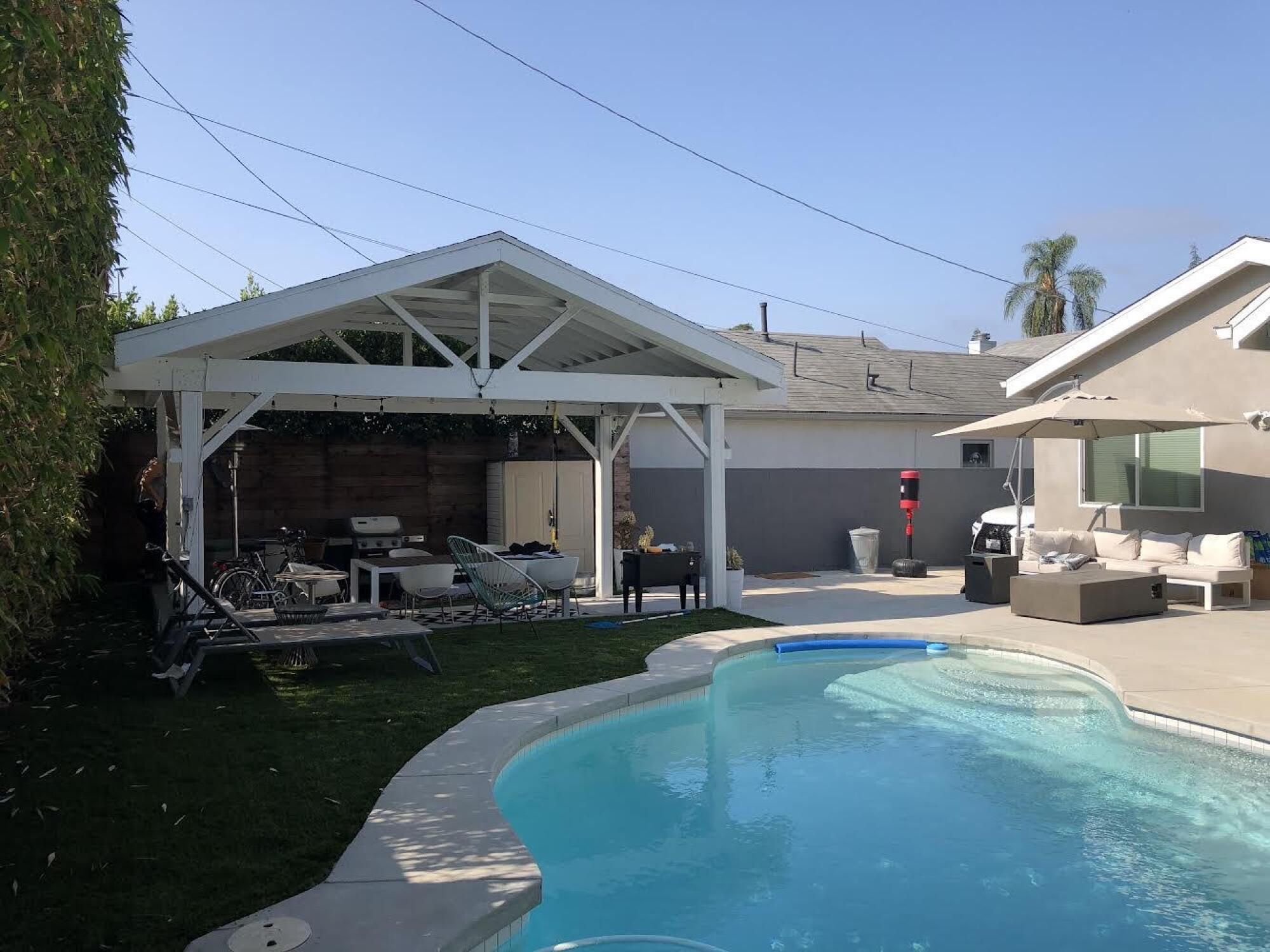
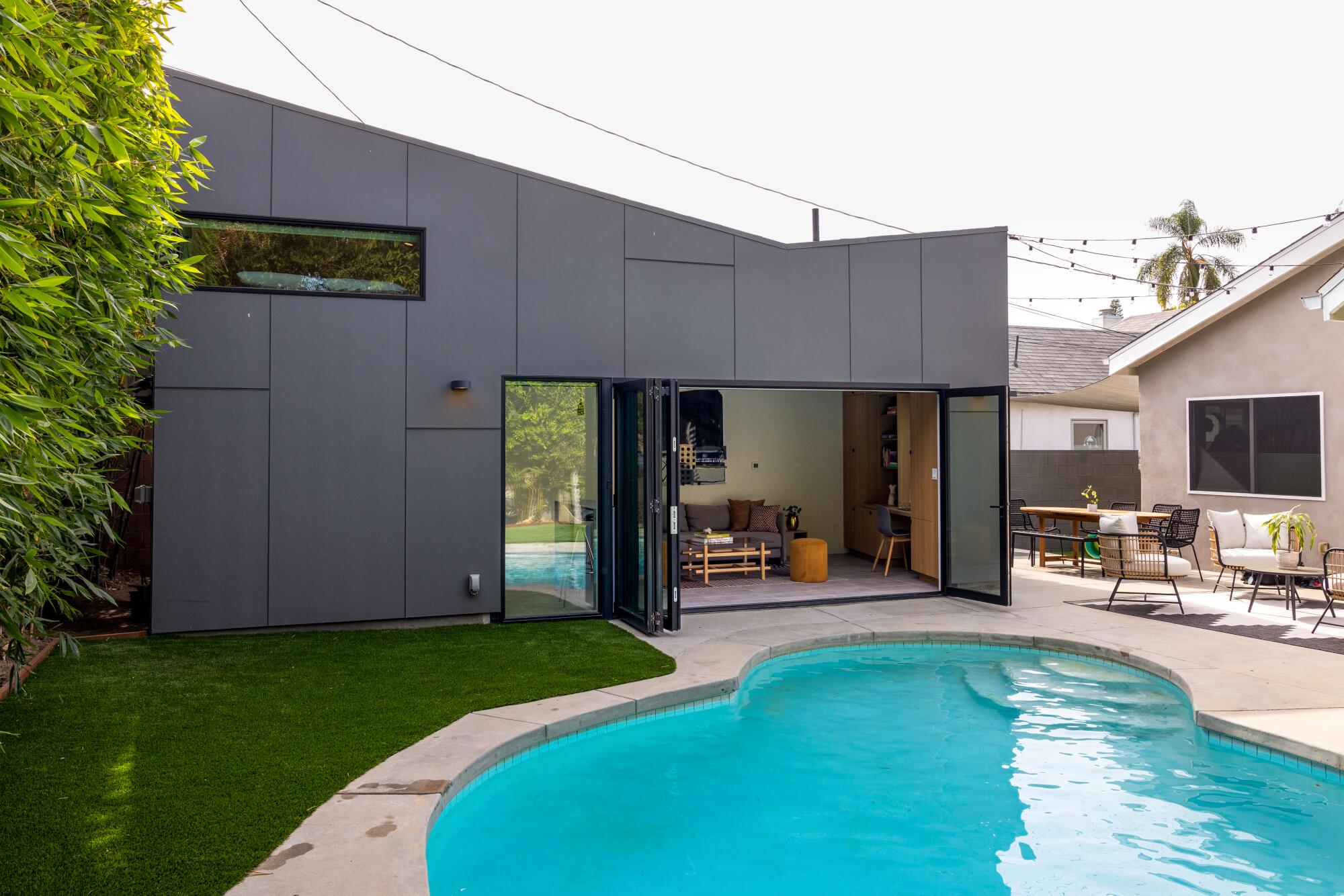
More Los Angeles ADUs
Three rentals and an ADU? A narrow two-story in Venice makes the case for building up
They turned their tiny L.A. garage into an ADU rental for steady income. Here’s how
Millennials and Gen Z can’t afford homes. Is this prefab ADU a solution?
How a Spanish bungalow in L.A. went from sad to sexy (Hint: There’s an ADU rental)
She wanted more than a guesthouse for her sister. This tiny ADU in L.A. delivers
They built an ADU that’s ready for rules that don’t exist yet
Tetris-like ADU packs an office, pool house, music room and gym into a tiny space
Tiny hideaway inspired by Richard Neutra has terrarium vibes and a rooftop deck
This ADU rental with windows galore is a houseplant lover’s dream
How an aging Tudor’s ADU reunited a family and brought them closer together
They turned a one-car garage into a stunning ADU to house their parents.
SoCal small-space living: 37 homes that inspire
More to Read
Sign up for This Evening's Big Stories
Catch up on the day with the 7 biggest L.A. Times stories in your inbox every weekday evening.
You may occasionally receive promotional content from the Los Angeles Times.
